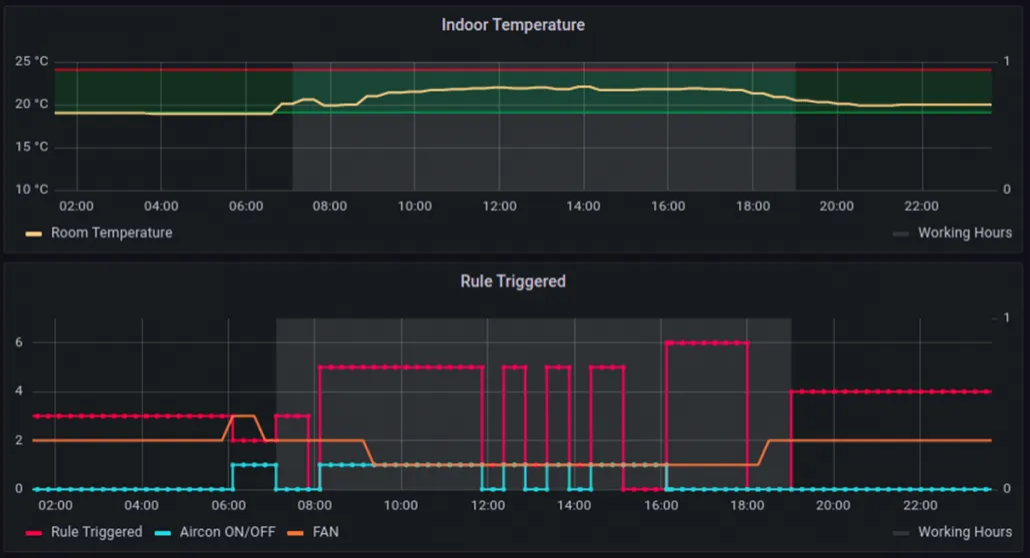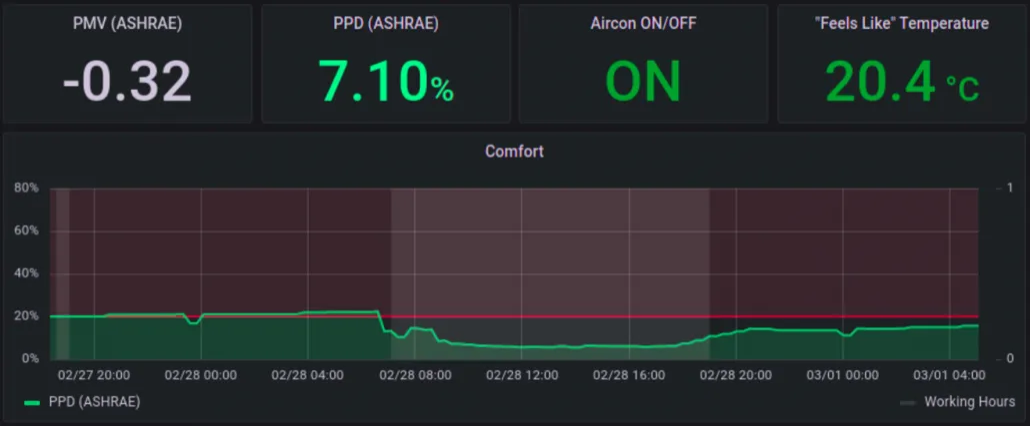The aim
Did you know that buildings are responsible for almost a third of the world’s energy consumption and CO2 emissions? That’s why reducing their energy consumption is crucial to mitigating climate change. HVAC systems alone account for around 40% of a building’s total energy consumption, making them a key target for energy optimisation.
In this article, we show how it is possible to reduce the consumption of HVAC systems by finding the optimal trade-off between minimising energy consumption, ensuring good levels of comfort, reducing energy costs, and maximising the use of renewable energy.
The approach not only helps to reduce energy consumption and costs but also plays a significant role in reducing the carbon footprint of buildings.
The solution
Energis, together with Helexia, developed and deployed a solution consisting of a rules-based AI system capable of controlling HVAC equipment in an intelligent and autonomous way.
The solution was installed on Energis’ Raspicy edge device and tested in a scenario consisting of an entire building equipped with temperature, humidity, CO2, and motion sensors. Communication between the intelligent controller and the HVAC system was via the ModBus protocol, although several other alternatives can be considered, such as BMS and an existing HTTP API.
The rule-based AI controller has an inference engine that applies condition-action rules stored in the knowledge base to make decisions and infer new facts.
The first step was to gather domain knowledge with the help of domain experts, and then convert this knowledge into rules that could be added to the system’s knowledge base.
After this initial phase, the system works autonomously, interacting with the environment to sense its state and applying the rules stored in the knowledge base to decide the best next action.
In addition to sensor data, the rule-based controller uses weather and occupancy forecasts, thanks to the AI toolbox developed within the BIGG European project, to proactively adapt to predicted environmental conditions. For example, the different zones can be pre-heated if occupancy and low outside temperatures are expected in the coming hours.
The result
As demonstrated during the research program, the rules-based controller was able to improve the comfort of the building while reducing the energy consumption of the HVAC system without human intervention. The optimisation algorithm also considered renewable energy production, making maximum use of solar radiation when available.
In addition, the ability to predict weather and occupancy conditions was an important factor in increasing energy efficiency, for example by exploiting the thermal inertia of the building at the end of the working day.
Monitoring the controller
The two panels of the controller dashboard below are used to monitor the indoor temperature and the actions taken. The controller would preheat the building when it was cold and would be occupied for the next few hours.

The comfort panels made it possible to monitor comfort in detail, for example, to follow the evolution of the Predicted Percentage of Dissatisfied (PPD) and Predicted Mean Vote (PMV) indices used by ASHRAE¹ to assess thermal comfort. PPD, shown as a green line in the comfort panel, estimates the percentage of people who are dissatisfied with the current level of comfort (cooling or heating) and must be less than 20% during working hours (grey area in the dashboards).





